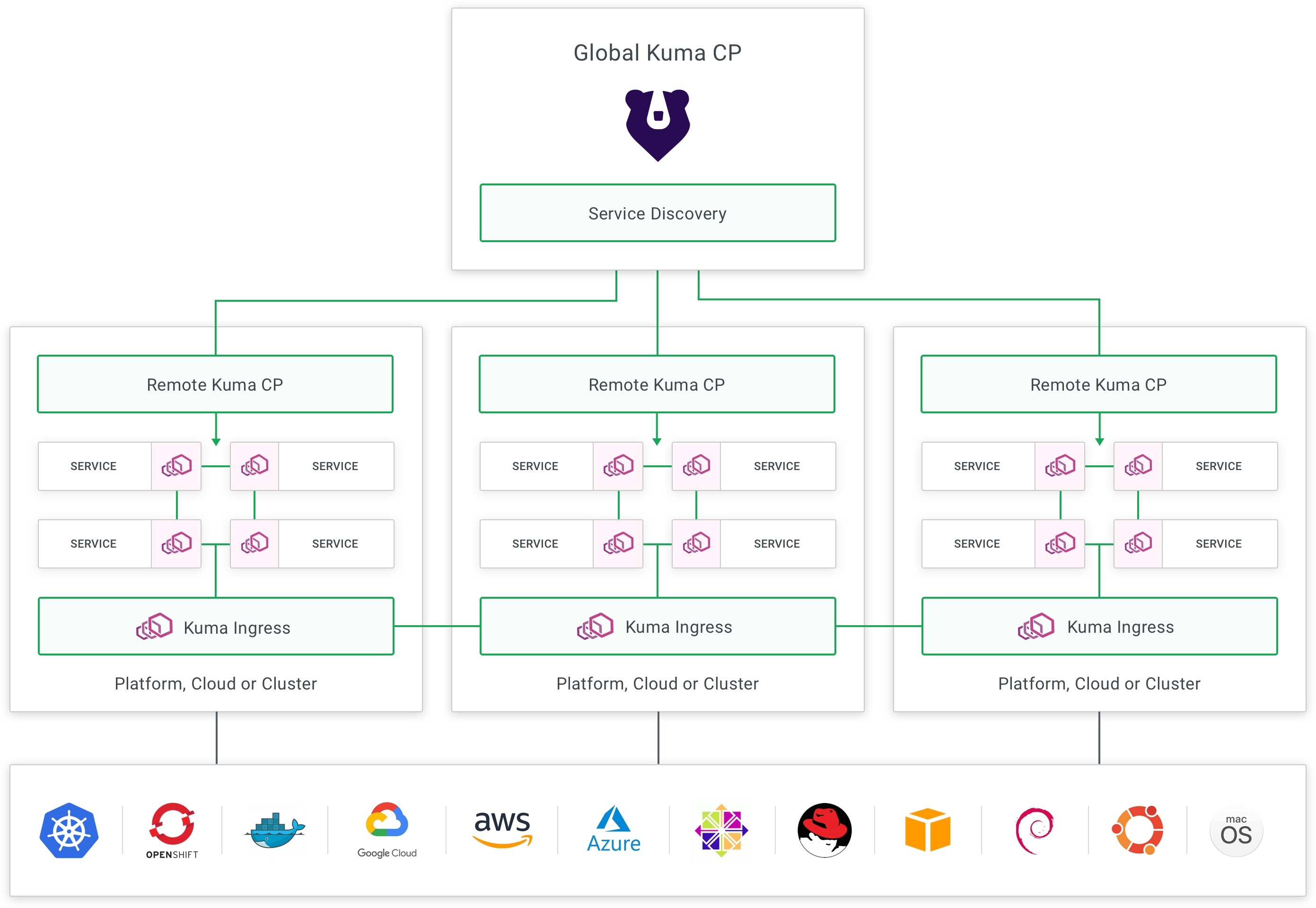Careful!
You are browsing documentation for a version of Kuma that is not the latest release.
Kuma vs XYZ
When Service Mesh first became mainstream around 2017, a few control planes were released by small and large organizations in order to support the first implementations of this new architectural pattern.
These control planes captured a lot of enthusiasm in the early days, but they all lacked pragmatism into creating a viable journey to Service Mesh adoption within existing organizations. These 1st generation solutions are:
- Greenfield-only: Hyper-focused on new greenfield applications, without providing a journey to modernize existing workloads running on VM and Bare Metal platforms where the current business runs today, in addition to Kubernetes.
- Complicated to use: Service Mesh doesn’t have to be complicated, but early implementations were hard to use; they had poor documentation and no clear upgrade path to mitigate breaking changes.
- Hard to deploy: Many moving parts, which need to be running optimally at the same time, makes it harder to run and scale a Service Mesh due to the side-effect of higher operational costs.
- Hard to distribute: Across different clouds, different data-centers and different Kubernetes clusters with non-intuitive service discovery and connectivity.
Kuma exists today to provide a pragmatic journey to implementing Service Mesh for the entire organization and for every team: for those running on modern Kubernetes environments and for those running on more traditional platforms like Virtual Machines and Bare Metal.
- Universal and Kubernetes-Native: Platform-agnostic, can run and operate anywhere on both Kubernetes and VMs.
- Single and Multi-Zone: To support multiple clouds, regions and Kubernetes clusters with out of the box multi-zone connectivity thanks to the native service discovery and ingress capability.
- Multi-Mesh: To support multiple individual meshes with one control plane, lowering the operational costs of supporting the entire organization.
- Attribute-Based policies: To apply fine grained service and traffic policies using any arbitrary tag selector for
sourcesanddestinations. - Envoy-Based: Powered by Envoy sidecar proxies, without exposing the complexity of Envoy itself.
- Easy to use: No moving parts. One click policy installation. Horizontally scalable.
- Enterprise-Ready: Used by mission critical enterprise use-cases that require uptime and stability.

To learn more about the single and multi-zone deployments of Kuma you can ready the deployments guide.
Real-Time Support: The Kuma community provides channels for real-time communication and support that you can explore in our Community page. It also provides dedicated Enterprise Support delivered by Kong.
